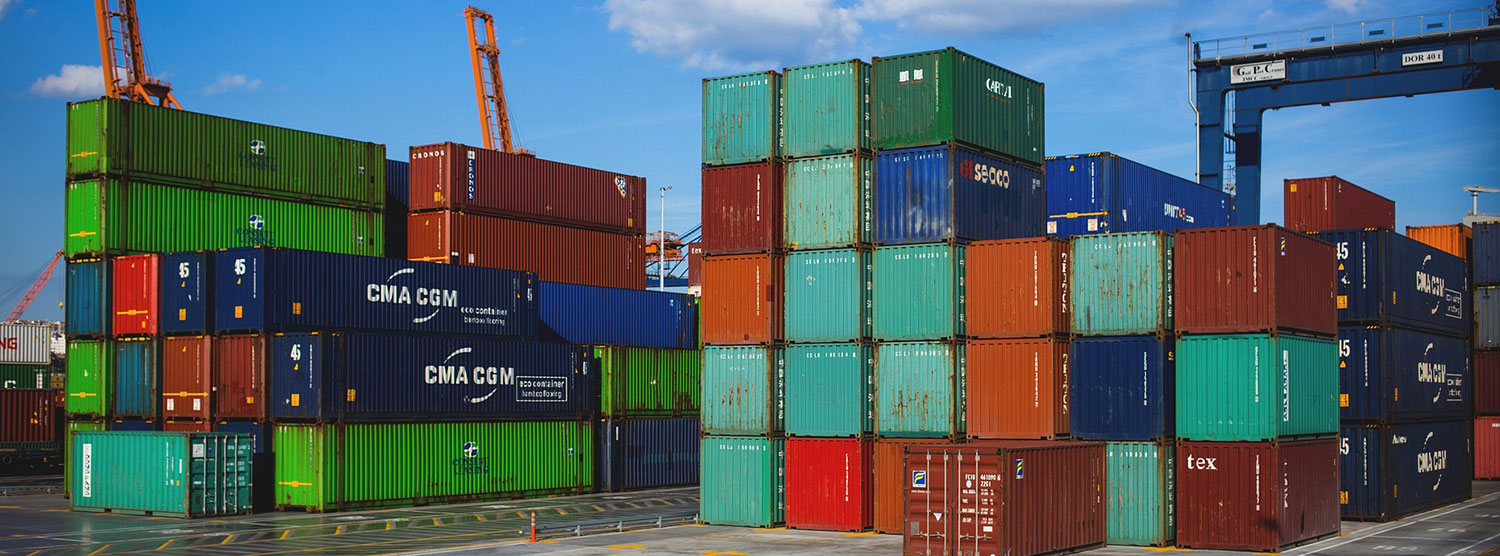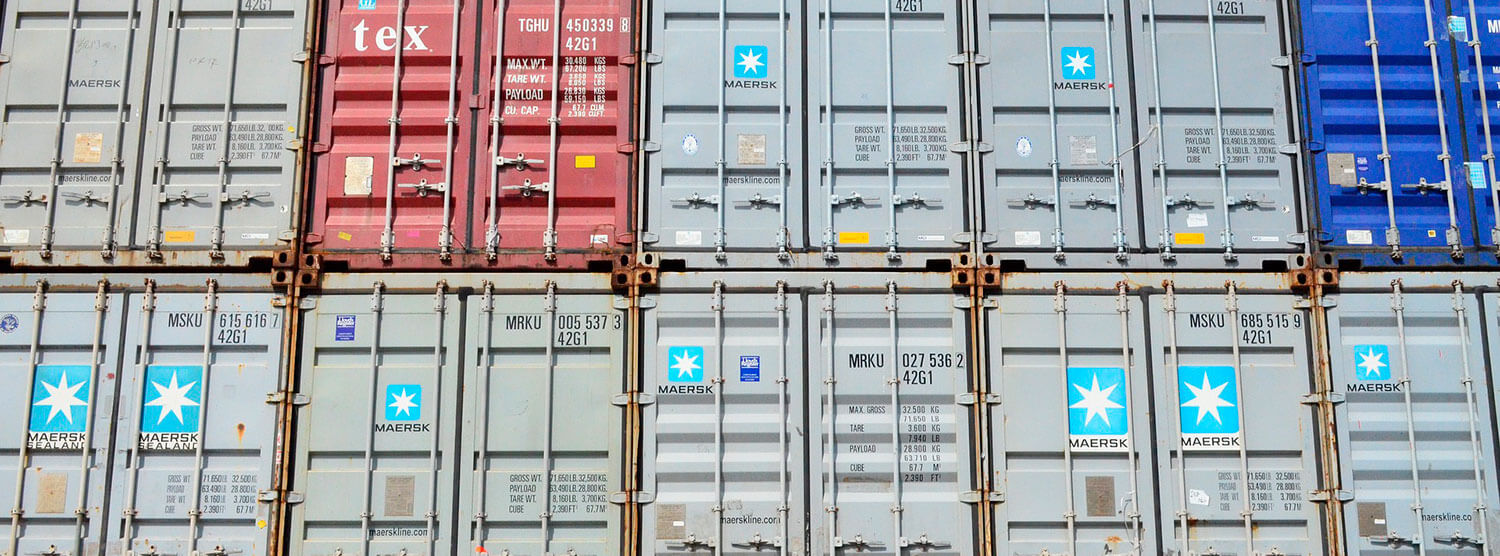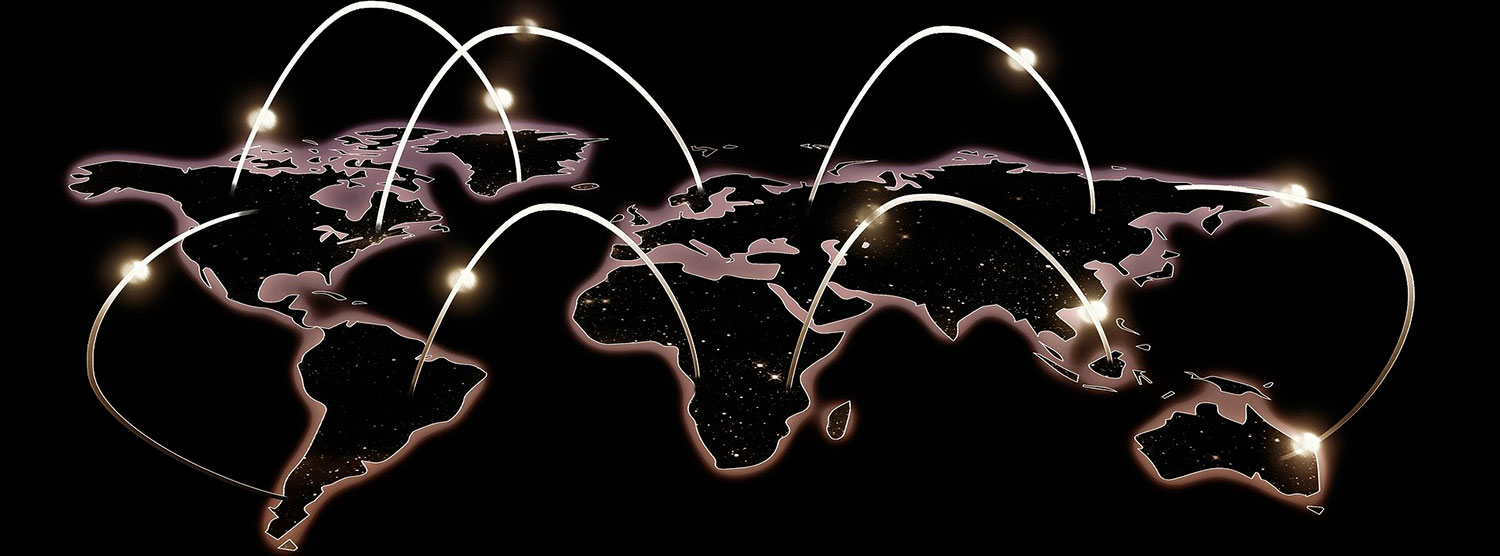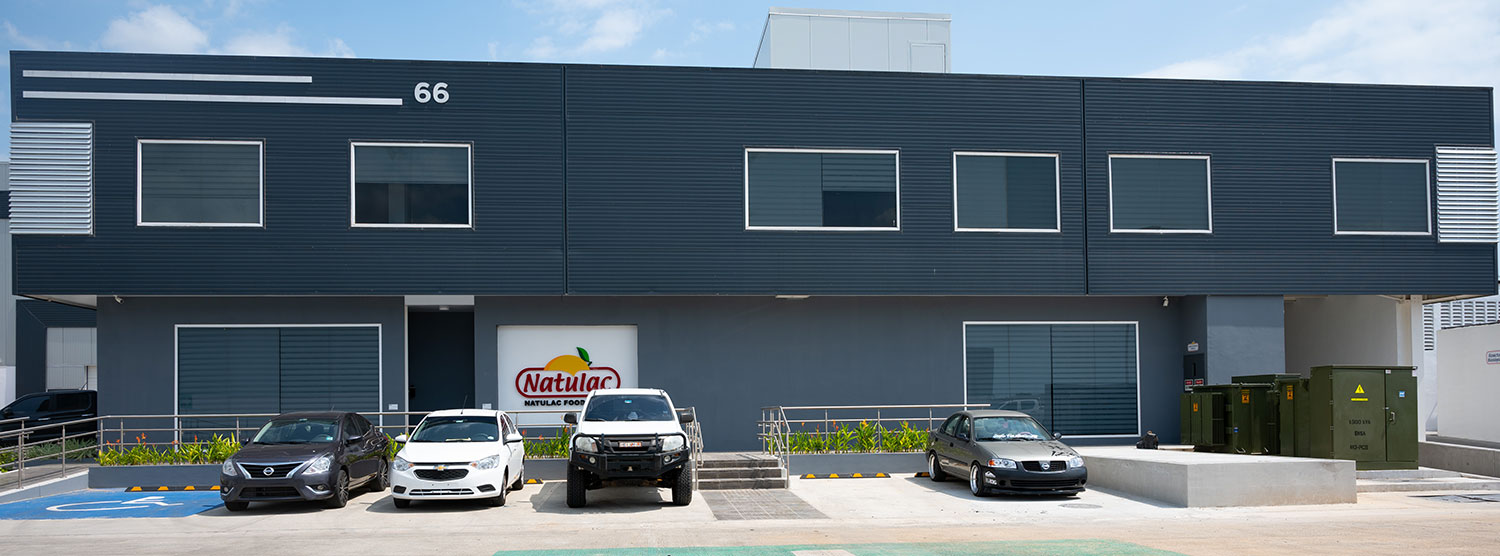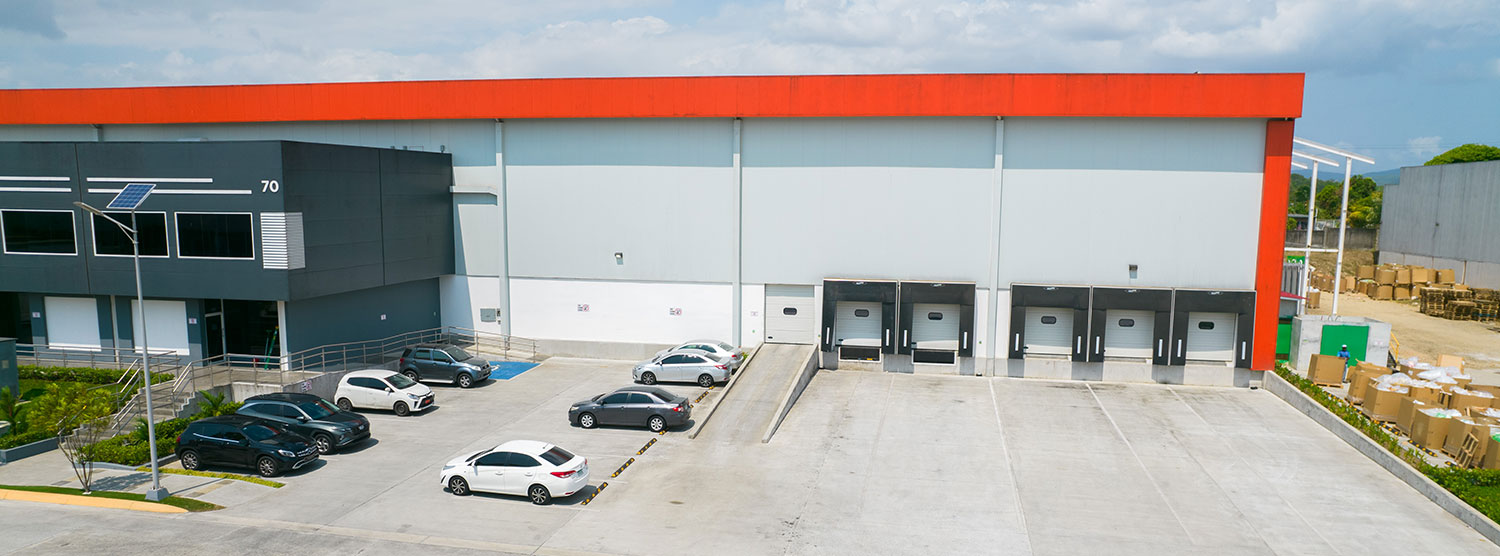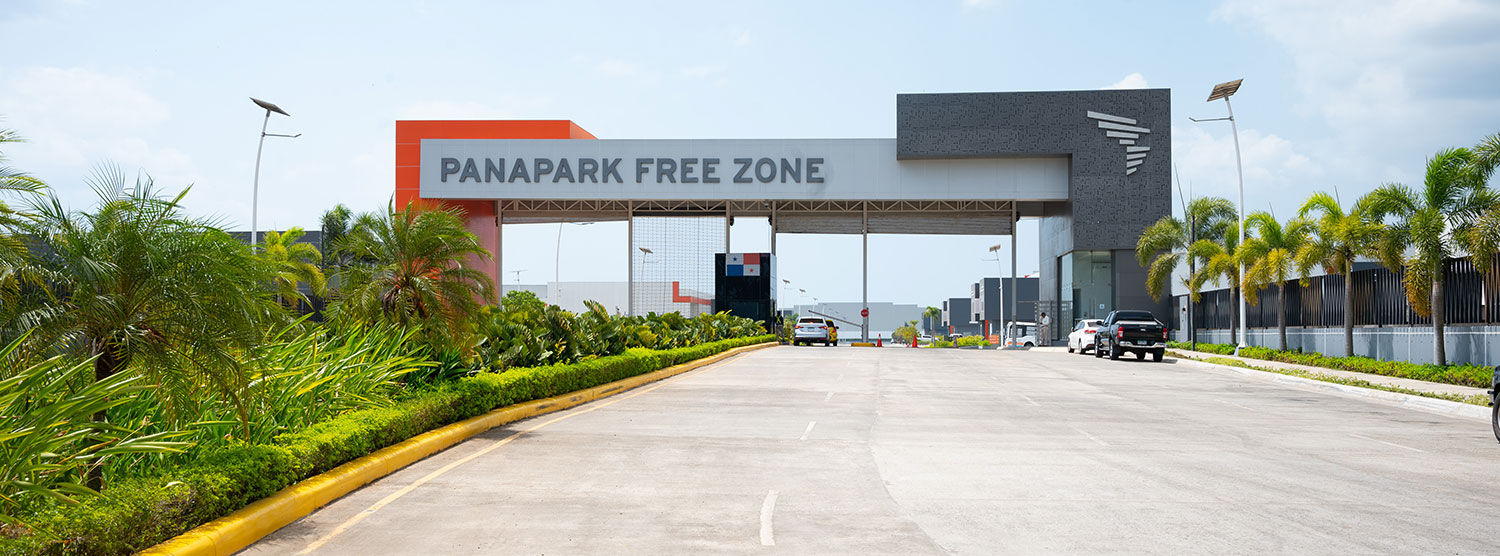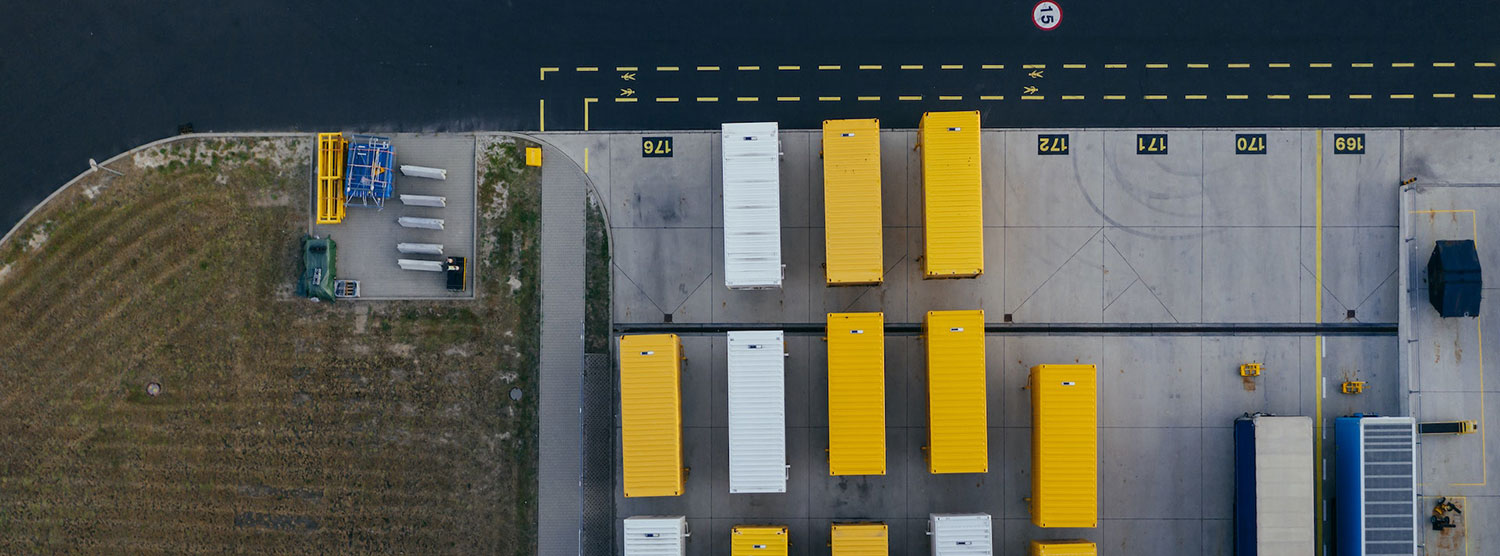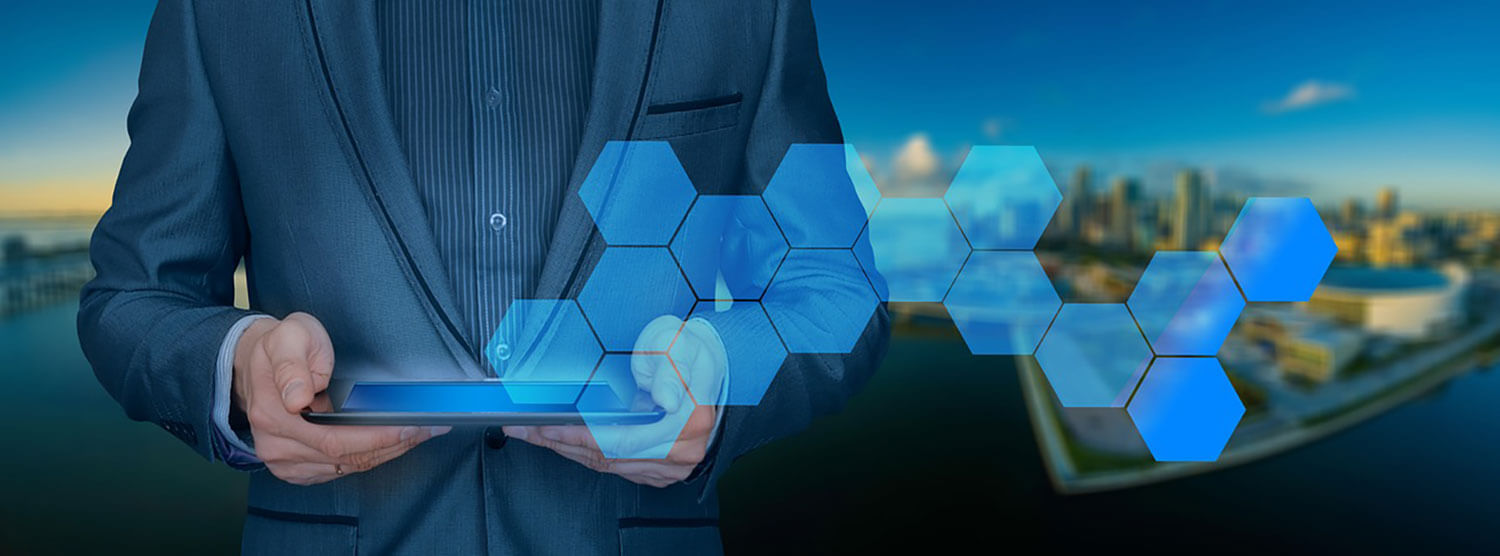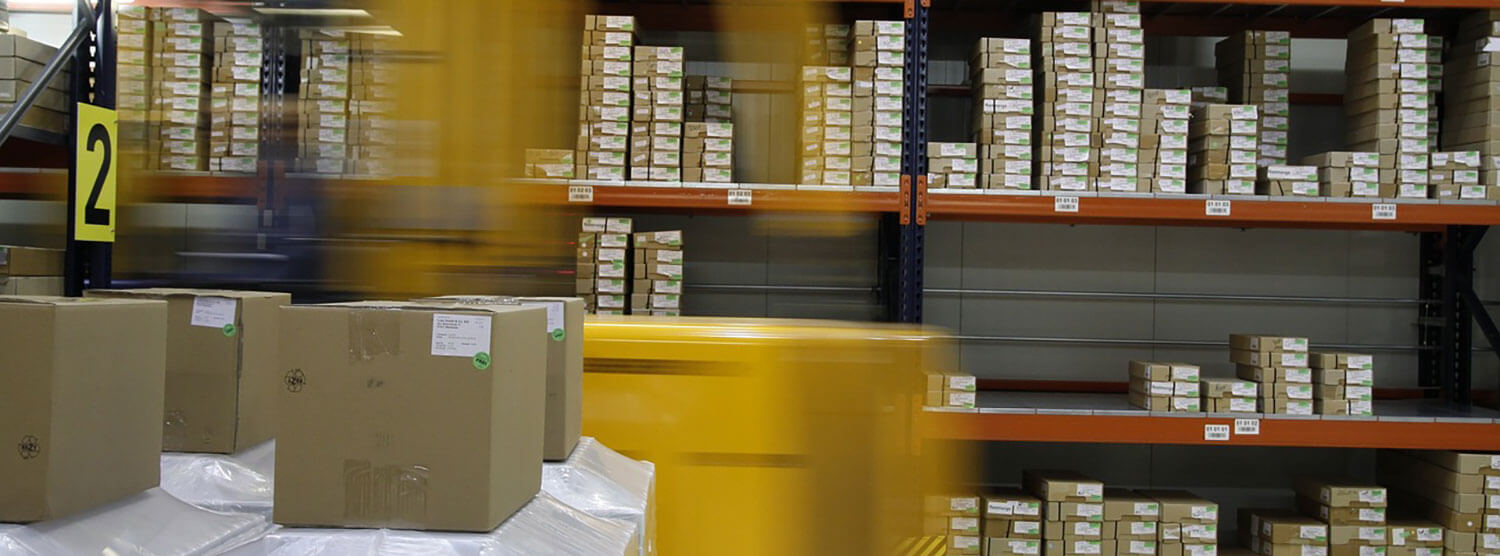Panapark Free Zone, the inaugural Private Free Trade Zone established in Panama.
Panapark Free Zone, the first Free Trade Zone in Panama to Boost your International Trade with Re-export Certificates from the country of origin.
In the dynamic world of international trade, it is essential to be aware of the strategies that can optimize your operations and maximize your profits. One of the fundamental pillars in this area is the Re-export Certificate, a powerful tool that can open new doors to your business and improve your competitive position.In this post, we will explore what a Re-export Certificate is, how it can benefit you and how Panapark Free Zone helps you in this process.
What is a Re-export Certificate? A Re-export Certificate is an official document issued by the customs authorities of a country that allows the departure of imported goods to another country without them being taxed with tariffs in the country of re-export. This is carried out under the regulations established by the country of access and in accordance with the country of origin of the goods.
Free Zones: Strengthening International Trade Free Zones are delimited geographic areas in which special customs and tax benefits are applied.These zones are designed to encourage foreign investment, job creation and the promotion of value-added economic activities. By operating in a Free Zone, companies can take advantage of tax exemptions, simplification of customs procedures and greater flexibility in their operations.
Impact and Benefits: Obtaining and proper use of Re-export Certificates from the country of origin can have a significant impact on your commercial operations.
Talk on Re-export Certificates: Recently, we had the pleasure of holding an enriching talk on the topic of Re-export Certificates. We had the participation of 14 Clients, who showed great interest in learning more about this tool and how they can take advantage of Customs Agency services to generate the necessary Re-export Certificates.
Link for more information about the re-export document:
https://www.ana.gob.pa/w_ana/index.php/about-event/certificado-de-reexportacion-procedencia
Panapark Free Zone: A key driver for the global economy
In the context of a globalized economy, free zones have emerged as an effective economic strategy to attract foreign investment, stimulate international trade and foster economic growth.
One of the most notable examples is Panapark Free Zone, located in Panama, which has become a nerve center for international companies seeking to benefit from its competitive advantages. In this article, we will explore the global economy and the role of free zones, focusing on the specific case of Panapark Free Zone.
- The global economy and its evolution:
The global economy has experienced accelerated growth in recent decades due to the interconnection of markets and trade liberalization. Globalization has allowed companies to expand beyond their national borders and seek opportunities in foreign markets. However, it has also generated greater competition and the need to find competitive advantages to stand out in the global market.
- What are free zones and why are they important?
Free zones are delimited geographical areas that offer a special tax and customs regime to promote foreign investment and economic activity. These areas provide benefits such as tax exemptions, reduced red tape, developed infrastructure, and access to skilled labor. Companies established in free zones can import raw materials and export finished products with favorable conditions, making them attractive destinations for international investors.
- Panapark Free Zone: A case of success in Panama:
Panama has consolidated its position as an important logistics and financial center in Latin America. Panapark Free Zone, located in Panama City, is the largest and most prominent free zone in the country. It offers a strategic location near the Panama Canal, which facilitates international trade and the efficient distribution of goods. Alongside a modern infrastructure, high-quality services and a wide range of industries represented, from logistics and manufacturing to technology and services.
- Advantages of settling in Panapark Free Zone:
Companies that choose to establish themselves in the Panapark Free Zone can benefit from several advantages. Firstly, they have access to a favorable tax regime, which includes exemption from taxes on profits and dividends for a certain period. This significantly reduces operating costs and increases the profitability of companies. Also the area has flexible labor legislation and an available qualified workforce, which is attractive for companies seeking to optimize their production and reduce labor costs.
- Impact on the global economy:
The existence of free zones as Panapark Free Zone, has a significant impact on the global economy. These areas encourage foreign direct investment, generate local employment, promote technological development and promote the transfer of knowledge. By attracting international investments and companies, free zones contribute to the host country’s economic growth and integration into the global economy.
In the case of Panapark Free Zone, its strategic location in Panama allows it to connect with key markets in Latin America, North America and Europe. This not only boosts international trade, but also strengthens economic ties between different regions, encouraging collaboration and diversification of the economy.
Furthermore, the presence of companies in the free zone generates positive effects on the supply chain and logistics. By concentrating various economic activities in one place, synergies and economies of scale are created that benefit companies and consumers. Efficiency in supply chain management and the reduction of logistics costs are key factors that make Panapark Free Zone an attractive logistics hub for companies seeking to optimize their operations globally.
Another relevant aspect is the promotion of innovation and technological development in free zones. The presence of international companies with specialized knowledge and advanced technological capabilities drives the transfer of technology and knowledge to the host country. This not only improves the competitiveness of the local economy, but also has a positive impact on the global economy by encouraging innovation and the creation of new products and services.
Finally, it is important to highlight that free zones such as Panapark Free Zone contribute to the generation of local employment. By attracting investment and businesses, job opportunities are created for local people, which in turn reduces poverty and improves the living conditions of nearby communities. The employment generated ranges from direct positions in companies established in the free zone to indirect jobs in related sectors, such as transportation, services and tourism.
In an increasingly interconnected world, free zones play a crucial role in the global economy. Panapark Free Zone in Panama is a clear example of how these areas promote foreign investment, international trade and economic growth. Its strategic location, favorable tax regime, developed infrastructure and focus on innovation make it an attractive destination for international companies.
The existence of free zones such as Panapark Free Zone strengthens the global economy by promoting economic integration, knowledge transfer and job creation. These areas have become key drivers for sustainable economic development and competitiveness in the context of the globalized economy.
The importance of Free Zones for International Business
In an increasingly globalized world, companies are constantly looking for opportunities to expand and access new markets. In this context, Free Zones have emerged as a crucial tool to promote international trade and promote the competitiveness of companies at a global level. These areas, dedicated to attracting foreign investment and facilitating trade, offer a series of benefits and advantages that make them a key factor in the success of international business.
One of the main advantages of Free Zones is the reduction of trade and customs barriers. Companies operating in these areas benefit from tax, tariff and customs exemptions, allowing them to import and export goods more efficiently and at a lower cost. These tax and customs incentives allow companies to improve their competitiveness in international markets by reducing production costs and improving their profit margins.
One of the main advantages of Free Zones is the reduction of trade and customs barriers. Companies operating in these areas benefit from tax, tariff and customs exemptions, allowing them to import and export goods more efficiently and at a lower cost. These tax and customs incentives allow companies to improve their competitiveness in international markets by reducing production costs and improving their profit margins.
One of the main advantages of Free Zones is the reduction of trade and customs barriers. Companies operating in these areas benefit from tax, tariff and customs exemptions, allowing them to import and export goods more efficiently and at a lower cost. These tax and customs incentives allow companies to improve their competitiveness in international markets by reducing production costs and improving their profit margins.
In addition to tax and customs benefits, Free Zones offer a business environment conducive to foreign investment. These areas have a modern and developed infrastructure that includes industrial parks, logistics zones, storage areas and office spaces. This quality infrastructure provides companies with a solid foundation to carry out their business operations efficiently and effectively.
In addition to tax and customs benefits, Free Zones offer a business environment conducive to foreign investment. These areas have a modern and developed infrastructure that includes industrial parks, logistics zones, storage areas and office spaces. This quality infrastructure provides companies with a solid foundation to carry out their business operations efficiently and effectively.
Another relevant aspect of the Free Zones is the simplification of administrative and customs procedures. These areas are designed to streamline bureaucratic processes and reduce the administrative burden on companies. This translates into greater efficiency in the management of commercial operations, which in turn allows companies to save time and resources in carrying out procedures and focus on productive activities.
Free Trade Zones also promote job creation and technology transfer. By attracting foreign investment, these areas generate employment opportunities for the local population, contributing to the economic and social development of the region. Furthermore, companies established in Free Zones often have access to cutting-edge technologies and specialized knowledge, which promotes technology transfer and the strengthening of local capabilities.
The strategic location of many Free Zones is another important factor to take into account. These areas are usually located in strategic locations that offer access to regional and international markets. This facilitates the distribution of products and the expansion of businesses to new markets, which increases the competitiveness of companies.
In summary, Free Zones play a fundamental role in promoting international business. Its tax benefits, developed infrastructure, simplification of procedures, job creation and strategic location are just some of the factors that make them an attractive environment for companies seeking to expand globally. In an increasingly interconnected world, Panapark Free Zone, being the largest Private Free Zone in Panama, represents a unique opportunity for companies seeking to expand in the region and access cutting-edge technology. The promotion of business innovation and the implementation of advanced technology in production processes, combined with modern infrastructure and a strategic location, make Panapark Free Zone the ideal integrative ally for foreign investment.
Why establish your business in a Free Trade Zone?
In the competitive world of business, making strategic decisions is essential for the success and profitability of a company. One of the key decisions entrepreneurs must consider is where to set up their business. In this sense, Free Trade Zones have emerged as an attractive and profitable option for companies seeking to expand internationally. But why establish your business in a Free Trade Zone? Here we will explore some of the main reasons.
Advantages of Establishing a Business in a Free Trade Zone:
- Tax and Customs Incentives:
- Free Trade Zones offer tax, tariff, and customs exemptions to encourage foreign investment and international trade. These incentives reduce operating costs and enhance profitability while providing flexibility in global trade.
- Access to International Markets:
- Free Trade Zones are strategically located, facilitating access to regional and international markets. This geographical advantage aids in the export of products and services, as well as entry into new markets. Developed logistics infrastructure further streamlines the distribution of goods.
- Infrastructure and Specialized Services:
- Free Trade Zones typically boast modern infrastructure, including industrial parks, logistics zones, and office spaces. This foundation supports efficient business operations. Specialized services such as legal advice, customs support, and business consulting are often available to assist companies in their establishment and growth.
- Simplification of Administrative Procedures:
- Free Trade Zones are designed to simplify administrative and customs procedures, reducing bureaucratic burdens for businesses. This streamlining of processes saves time and resources, enhancing operational efficiency.
- Political and Economic Stability:
- Many Free Zones are situated in countries with political and economic stability, creating a secure environment for long-term investment and robust business relationships. Stability reduces risks and provides a reliable framework for business growth.
In summary, establishing your business in a Free Trade Zone can be a smart strategy to drive business success. Tax incentives, access to international markets, specialized infrastructure, simplification of procedures, and political and economic stability provide companies with a series of competitive advantages and growth opportunities. By taking advantage of these benefits, companies can improve their profitability, expand their global reach, and optimize their business operations.
However, it is important to highlight that each Free Zone has its own specific characteristics and regulations. Before making the decision to establish your business in a Free Trade Zone, it is essential to carry out a thorough analysis of the particular conditions and requirements of each zone. This will ensure that you take full advantage of the benefits and opportunities it offers.
Establishing your business in Panapark Free Zone is presented as a strategic move to leverage the benefits of a top-tier Free Zone. The combination of tax incentives, international market access, infrastructure, administrative efficiency, and a sustainability focus positions Panapark as an ideal environment for global industry success.
In this context, Panapark Free Zone stands out as a particularly attractive option to establish your business in a Free Zone. Strategically located in the heart of Panama, Panapark Free Zone is the largest Private Free Zone in Panama and offers a unique combination of benefits and opportunities for companies.
With modern infrastructure, access to international markets and a wide range of specialized services, Panapark Free Zone is positioned as an ideal business environment for the global industry. Its tax and customs incentives, along with the simplification of administrative procedures, allow companies to reduce costs and save time, thus boosting their profitability.
Additionally, Panapark Free Zone stands out for its focus on sustainability and corporate social responsibility. With programs and policies that promote sustainable and environmentally friendly practices, Panapark Free Zone not only provides a favorable business environment, but also contributes to sustainable development and building a strong business reputation.
To resume, establishing your business in Panapark Free Zone gives you the opportunity to take advantage of the benefits of a top-notch Free Zone. From its tax and customs incentives to its quality infrastructure and focus on sustainability, Panapark Free Zone offers a conducive environment to drive the success and competitiveness of your company on a global level. Don’t wait any longer and discover the advantages that Panapark Free Zone can offer your business.
How has Panapark Free Zone adapted to these trends?
In the competitive world of imports and exports, adapting to changing trends is crucial to staying relevant and competitive in the market. In this sense, Panapark Free Zone has been constantly working on improving its infrastructure and services to adapt to the import and export trends of 2023.
Panapark Free Zone has focused on sustainability, another important trend in the world of imports and exports. The industrial park has implemented sustainable practices in its daily operations, such as responsible waste management, the use of renewable energy and the promotion of sustainable mobility in its facilities. In addition, it is promoting the production and marketing of sustainable products in its facilities, in line with the growing demand for sustainable products and services.
In terms of supply chain, Panapark Free Zone is in tune with the trend towards supply chain diversification. The industrial park is working to attract new companies and sectors to diversify its offer and reduce its dependence on a single sector or market. It is also working on improving connectivity with other markets, with the aim of improving integration into the global supply chain.
On the other hand, Panapark Free Zone is committed to the constant training of its staff and the development of talents. This allows them to be aware of trends and changes in the market and offer more specialized services adapted to the needs of clients.
In summary, Panapark Free Zone is taking into account 2023 import and export trends and adapting to meet the changing needs of its customers. Investment in cutting-edge technology, sustainability, supply chain diversification and constant training are some of the key elements of the adaptation strategy.
Panapark Free Zone is the ideal integrative ally for companies seeking to improve their efficiency, reduce costs and improve their presence in the global market.
Advantages of a Free Zone
Free zones in the export sector play a primary role, since they enjoy important tax and labor benefits in Panama.
Within a free zone, operators, goods industries, service industries and regular commercial use can carry out activities.
An operator is the legal entity authorized to direct, manage, supervise, promote and develop one or more Free Zones, as well as to qualify its users.
The Goods industry refers to the legal entity established exclusively in one or more Free Trade Zones, authorized to produce, transform or assemble goods through the processing of raw materials or semi-finished products.
In this sense, the service industry is the legal entity authorized to exclusively develop, in one or several Free Zones, among others, the following activities: logistics, transportation, handling, distribution, packaging, packaging, among several others.
Trade refers to the legal entity authorized to carry out marketing, commercialization, storage or conservation activities of goods in one or more Free Zones.
The main objectives of the free zones are to boost exports, generate employment in these regions and even encourage investment from other countries. As they are areas that have important tax advantages, they are an incentive for a logistics company to operate and, in this way, obtain a series of benefits.
Free zones have been very important for commercial and economic growth since ancient times.
Innovation and Sustainability within a Free Trade Zone
The expansion of your company can be carried out in the largest Private Free Zone in Panama thanks to its varied benefits, flexibility, first-world infrastructure and highly qualified professional team to serve its clients. PANAPARK is the best strategic ally for companies, always aligned and integrated with the advantages that Panama offers as a multimodal bridge to facilitate the trade of countries since, thanks to its tax, customs, immigration, labor and financial advantages, it has positioned itself in the economy. worldwide through investment, always motivating technological, economic and social development.
It has been shown that customers are willing to pay for the differentiator of being in an environmentally friendly industrial park that also reduces its impact on the surrounding area, since this gives them the ability to compete with similar others in the market. same country or in the region, while allowing the evolution of the concept of sustainability.
Regarding the above, we can add that although Free Zones are defined as geographical areas delimited within a national territory where industrial activities of goods and services or commercial activities are carried out under special regulations on tax, customs and trade matters, externally, it is necessary to visualize much further and conceive of the Free Zones as intelligent cities or ‘Smart Cities’.
In Panama there is connectivity with the different markets in the region and the world thanks to its privileged location, it has a unique attraction for foreign investment.
There are a variety of industrial parks in the country located in strategic points, taking into account the ease of access to the main industrial and logistics infrastructures.
The Free Zones of the future must be efficient and technological, including topics such as: Artificial Intelligence, Internet of Things, Virtual Reality, Big Data, Industry 4.0, etc.
With all of the above, we can say that a Free Trade Zone must combine environmental actions (environmentally friendly, reduction of waste and resources), social (social responsibility) and economic actions (cost reduction through efficiency and that are economically viable), to achieve its positioning regionally and globally.
In this sense, Panapark is the largest Private Free Zone in Panama and has focused various efforts to include within its agenda making the necessary modifications to become more environmentally friendly, generating large open spaces so that it can operate The best way and being in the process of being a Free Zone 4.0, involves having all the necessary services that will boost your business, as well as focusing on the well-being of both the workers and the businesses that operate within this Free Zone.
Sustainability and Free Zones
In Panama there is connectivity with the different markets of the region and the world thanks to its privileged location, it has a unique attraction for foreign investment. There are a variety of industrial parks in the country located at strategic points, taking into account the ease of access to the main industrial and logistics infrastructures.
Within a free zone, operators, goods industries, service industries and regular commercial use can carry out activities.
Continuous improvement involves six different phases that seek to obtain small improvements in processes and products, with the aim of increasing quality and reducing incidents.
Evaluate the current situation, that is, recognize how the supply chain is in order to facilitate the detection of weak points in the processes and to be able to implement improvement strategies.
Free zones have as main objectives to boost exports, generate employment in those regions and even encourage investment from other countries. Being areas that have important tax advantages, they are an incentive for a logistics company to operate and, in this way, obtain a series of benefits.
A Free Trade Zone is a delimited geographical area of the national territory, whose purpose is to promote and develop the process of industrialization of goods and the provision of services intended primarily for foreign markets. The Free Zones have tax, foreign trade, credit and exchange benefits.
One of the main advantages provided by the Free Zone Law are the tax incentives it provides to companies established in its customs territory. The main goal of the free zones is to increase the volume of exported products, the plants, factories and centers gathered within their area are focused on that objective.
In Panama there is connectivity with the different markets of the region and the world thanks to its privileged location, it has a unique attraction for foreign investment. There are a variety of industrial parks in the country located at strategic points, taking into account the ease of access to the main industrial and logistics infrastructures.
A Free Trade Zone must combine environmental (environmentally friendly, waste and resource reduction), social (social responsibility) and economic (cost reduction through efficiency and economically viable) actions to achieve its regional and global positioning.
Logistics processes in Panama
Logistics services, mainly for preparation processes, order packaging and inventories, are increasing by companies seeking this external outsourcing to improve productivity and distribution service, streamlining the supply chain.
The support in logistics services that local production requires, Panama maintains growth levels in terms of cargo volumes that are mobilized to and through the national territory. In the case of ports, according to statistics from the Panama Maritime Authority, the Panamanian port system registered 8.6 million TEUS (maritime transport unit of measurement) in 2021, higher than 7.7 million in 2020 and 7.3 million in 2019.
The foregoing indicates that despite the SAR COV-2 pandemic, business continues to grow in and from Panama; administrative and governmental processes to take advantage of the strategic geographical position that Panama has in the global maritime and logistics sector.
Companies looking for an in-house logistics service, more than just needing staff, require monitoring of measurements with indicators of production and quality of service, as well as controls for the protection of people and process certifications.
It is known that greater digitization is required to improve processes and that operators must have specific training, so it is important to enhance cognitive skills such as memory, hand-eye coordination, spatial memory, among others, to improve productivity from the workers.
Each improvement that is made individually has an impact on the company in which it is developed, which in turn generates growth for the country.
In the field of logistics, picking and packing are related procedures, and are among the most demanded services in the sector. Picking refers to the preparation of orders, from the collection of the material and extraction of units or packaged sets, which can be units or by boxes. While the packing is related to the packaging, and consists of the preparation of the products that have been collected in the picking phase to be sent: packaging, packaging or container.
Challenges in logistics and supply processes
The port closures caused a bottleneck of supplies waiting for both containers to pack and ships to transport them. This has increased the cost of transporting goods. For example, where it used to cost $3,000 to ship a container from southern China to the west coast of the United States, now it can cost $20,000 or more. This will be reflected in the cost that we must pay as consumers.
It has been highlighted that 90% of the products in the world move by ship and that a large part of them come from China. He pointed out that the infections and restrictions imposed by the pandemic affected the workers in the port terminals, “breaking” the chain numerous times.
Focus areas that companies should think about to ensure they have the right solutions to address these challenges include:
• Implement risk mitigation strategies. The pandemic has exposed the weaknesses and risks of a global supply chain. When a furniture factory shuts down in Vietnam, or a shipment of toys gets stuck in a closed port, you need to have a “plan B” for your key products or components. By identifying alternative sources of supply and balancing offshore, quasi-offshore and onshore contract suppliers and manufacturers, you can significantly reduce the risk of disruption.
• Incorporate inventory optimization strategies throughout your enterprise network to establish inventory safeguards at strategic decoupling points and buffer against disruptive events.
• Improve visibility into real demand by taking into account leading indicators, such as sentiment analysis of what’s hot on social media. Early signals about actual sales, as well as how and where they are happening, are also needed.
The support in logistics services that local production requires, Panama maintains growth levels in terms of cargo volumes that are mobilized to and through the national territory. In the case of ports, according to statistics from the Panama Maritime Authority, the Panamanian port system registered 8.6 million TEUS (maritime transport unit of measurement) in 2021, higher than 7.7 million in 2020 and 7.3 million in 2019.
Companies looking for an in-house logistics service, more than just needing staff, require monitoring of measurements with indicators of production and quality of service, as well as controls to protect people and process certifications.
It is known that greater digitization is required to improve processes and that operators must have specific training, so it is important to enhance cognitive skills such as memory, hand-eye coordination, spatial memory, among others, to improve productivity from the workers.
Logistics services, mainly for the preparation processes, order packing and inventories, are increasing by companies seeking this external outsourcing to improve productivity and distribution service, streamlining the supply chain.
